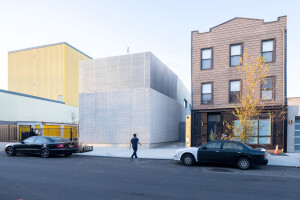A low-carbon brick made from recycled municipal waste has been developed for the construction of a new wing for the Design Museum Gent (DING), Belgium, a project currently under construction with a completion date anticipated in 2024.
DING is a regional museum in Flanders dedicated to the Belgian national collection of ‘design culture’. The institution is located in the city’s historic center and adjacent to an UNESCO World Heritage Site. The museum is currently accommodated within a collection of listed buildings dating from 1755. It is undertaking this project for an additional 1980 square meter wing to house galleries and event spaces for expanded cultural programming and visitor outreach. The extension will form a missing fourth wall of a formal courtyard, creating a new entrance and circulation strategy for the museum.
The project is designed by London-based architecture firm Carmody Groarke in collaboration with local Beligan firm TRANS Architects and development partners Local Works Studio and BC materials, a company that transforms excavated earth into building materials such as compressed earth blocks and rammed earth walls. The design team worked closely with DING to challenge the material qualities and aesthetic properties of typical masonry. By doing so the new brick is aligned with the institution’s ethos and its focus on exhibiting objects of high craft and design.
The 'Gent Waste Brick' is cured rather than fired, gaining strength from carbonation and reducing the energy associated with typical fired brick production. Hydraulic lime sequesters carbon dioxide from the atmosphere as the bricks cure over time. The fabrication process, coupled with the use of recycled composites, results in a brick with 0.17 kilograms of embodied carbon per kilogram of produced material, about a third that of a typical Belgian clay brick over a 60-year life cycle. The architects have calculated that the museum will reduce the embodied carbon of the envelope by 107 tons.
Approximately 63 percent of the bricks are made from crushed concrete and glass. The composite materials were carefully selected to create the brick’s pale-white tone, a color chosen to reference the colors of the surrounding civic buildings. The waste materials were filtered and sorted at a local production center before being pressed into their specified shape and size. As part of the museum’s engagement program, residents and visitors are engaged in helping to produce some of the bricks, which are manufactured with zero emissions and zero by-products on a brownfield site near to the museum. Such a local process, according to the design team, could be easily exported to other sites around the world.















































